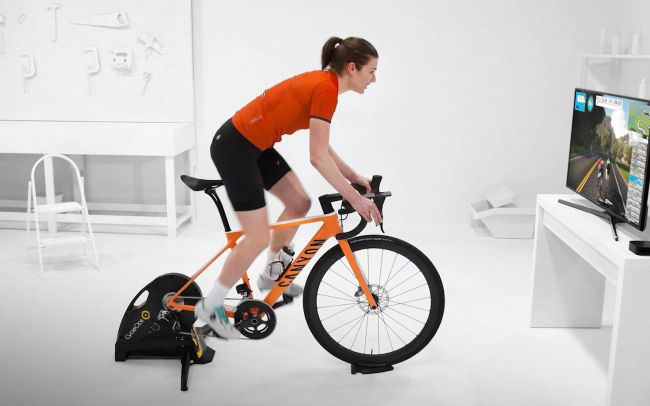How to get fit fast: Time-crunched cycling training tips
If you want to know how to get fit fast, we explain the best ways to tailor your training around a time-crunched cyclist's lifestyle

When it comes to answering the question of how to get fit fast, unfortunately there are no hacks or cheat ways to get there. As with any fitness-related goal, it's going to take hard work and commitment. However, there are a number of ways to tailor your training in order to boost fitness in the shortest time possible.
Polarised training
Polarised training comprises a large percentage of time (approximately 70 to 80 per cent of training time) exercising at low intensity, with little to no time (0 to 10 per cent) at moderate intensity, and the remainder (15 to 20 per cent) spent in high intensity.
While there are a number of different training strategies to improve performance, there is a growing body of research that suggests athletes and coaches should adopt a polarised training model to maximally improve performance and physiological adaptation over a short training period.
The key to nailing polarised training is ensuring all easy training sessions remain easy and that you give maximal effort during the hard sessions. This is where the majority of athletes go wrong - going too hard on the easy days and not hard enough on the hard days.
How do I apply this to my own training?
Excellent results can be achieved through following a polarised program training just 7-8 hours per week. It is recommended to spend approximately 60 – 90 minutes (20 per cent of training time) at a high intensity.
High-Intensity Interval Training (HIIT)
High-Intensity Interval Training (HIIT) can be defined as short to moderate bouts (10 seconds to 5 minutes) of high-intensity work separated by brief periods (2 to 5 minutes) of low-intensity work or inactivity that allows for partial but often not full recovery. The benefit of HIIT is the ability for an individual to accumulate a greater amount of time at high intensity compared to one continuous effort.
Get The Leadout Newsletter
The latest race content, interviews, features, reviews and expert buying guides, direct to your inbox!
While this does sound daunting, and often leads to cyclists being hesitant to include HIIT into their training due to the increased levels of physical discomfort, it is a good method to improve physical fitness in less time than traditional methods.
As few as two HIIT sessions per week for 2 – 4 weeks can result in improvements in performance. The cardiovascular and neuromuscular systems are where the majority of the adaptations to HIIT occur. Some of the changes that have been reported to occur include:
- Increases in blood and plasma volume (increased oxygen-carrying capacity). An increase in the vasodilation of the blood vessels that deliver oxygen to the working muscles. Increased recruitment of Type II muscle fibres during HIIT sessions.
- Type II fibres are recruited at intensities above 90 per cent of VO2 Max. Type II fibres are larger and more powerful, but less oxidative and more glycolytic than Type I fibres. Exercising at intensities above threshold causes Type II fibres to adapt and become more oxidative and more fatigue resistant.
- Type II muscle fibres appear to be recruited at intensities above 90% per cent of VO2 Max and the intensity of the session will produce a high cardiac output and promote the changes mentioned.
Try these sessions to improve your fitness which can be done outdoors or on a turbo trainer:
- 8 x 4 minutes at 90% with 2 - 4 minutes of recovery between intervals.
- 10 x 30-second maximal sprints with 4.5 minutes of recovery between intervals. (A Zone 5 intensity effort can be gauged by going as hard as you can possibly go for the allocated time).
One should exercise caution when adding HIIT sessions to your training because more is not always better. It is recommended to perform two HIIT sessions per week. Increasing the number of HIIT sessions won’t always benefit endurance performance. Ensure you allow adequate recovery between sessions.
Maximise the time you do have to train
Use indoor cycling to maximise your training time. The best turbo trainers or smart bikes allow us to fit more quality work into a shorter time, which is a major positive for the time-constrained individual. It's easier to monitor and measure your effort when training indoors as athletes can place the exact desired force and workload through the pedals.
Consistency is king
The most important element of training is, without a doubt, consistency. Being consistent in terms of your frequency of workouts as well as adherence to the workout format will lead to greater improvements in performance. Following a well-structured training plan that is designed accordingly to your specific lifestyle will allow you to be consistent and improve your performance.
Jarred Salzwedel completed his Honours degree in Sports Science at the Nelson Mandela Metropolitan University in 2013. His Master's degree focused on investigating training adaptations to differing high-intensity interval training programmes in cyclists.
He has raced both on the road and track at a National level in the Junior ranks which led to his interest in the science behind training and conditioning, as well as his passion to help athletes optimise their performance.
Jarred owns and manages Cycle Dynamic Coaching - a coaching platform that looks after and advises some of South Africa’s top Road and Track cyclists. He has extensive knowledge in exercise physiology having previously focused on the physiological testing of endurance athletes.
